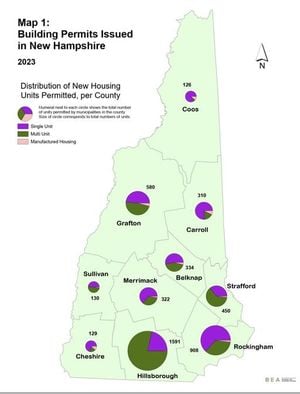Severe flooding hit the Marginal Tietê, one of São Paulo's busiest expressways, after heavy rains on the night of January 31, 2025. By the morning of February 1, reports indicated the presence of at least ten points of impassable water, disrupting traffic and causing significant chaos.
According to SBT News, the persistent rain caused the overflow of three rivers along the route, worsening the situation across the city. Alongside the flooding, numerous trees fell and buildings sustained damage due to the adverse weather. Eyewitnesses recounted tense moments as motorists had to abandon their vehicles, trapped by rapidly rising water levels.
A particularly harrowing scene unfolded on Marginal Tietê, where specific points, including the Pista Central and Pista Local at the Ponte Casa Verde, became nearly impossible to traverse. Reports from the state’s Civil Defense detail how storms can saturate drainage systems, leading to systemic failures during heavy rains.
"A chuva, que foi acompanhada de ventos fortes e trovoadas, causou uma rápida saturação no sistema de drenagem da cidade," noted Estadão, emphasizing the rapid nature of the flooding and its immediate repercussions.
Motorists impacted by the storm expressed frustration at the lack of effective warning systems and preparation for such events. Emergency services, including the local Corpo de Bombeiros and CET, scrambled to navigate the tumult and assist affected residents.
"Motoristas que trafegavam pela Marginal Tietê... tiveram que interromper suas viagens e deixar os veículos para trás," reported Estadão, indicating the scale of the disruption faced by drivers across the city.
This incident reiterates concerns over São Paulo's infrastructure, with flooding on Marginal Tietê not being an isolated event. The city's drainage systems, often hampered by litter and inefficient designs, consistently struggle under the weight of significant rainfall events.
Experts highlight the historical data supporting the city's vulnerability. CEMADEM and INMET noted torrential rainfall totals exceeding 120 millimeters over just 24 hours, almost half of what is typically expected for the entire month of January.
Calls for improved infrastructure are becoming increasingly urgent as São Paulo continues to deal with the effects of climate change and urbanization. Urban planners are advocating for more sustainable drainage systems, improvements to existing infrastructure, and greater community awareness about the impact of littering and improper waste disposal on drainage capacity.
By mid-morning on February 1, though water levels began to recede, the damage had been done. Many commuters were left stranded, adding to growing resentment toward local authorities for perceived failure to effectively manage urban stormwater systems.
A local resident expressed frustration tweeted, "Marginal Tietê tudo parado. Graças à Deus consegui desviar," capturing the sentiment of those impacted by the flood.
Despite the cessation of rain, the situation remains precarious. With thousands of commuters dependent on the Marginal Tietê daily, the continued flooding poses serious safety risks and economic impacts. Local government officials should heed experts' warnings and address underlying infrastructure issues before future storms exacerbate these problems.
Officials from CET are recommending detours and alternative routes for displaced commuters. Meanwhile, the focus turns to ensuring emergency services can respond effectively should this flooding happen again.



